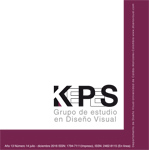Authors
Abstract
This article presents a synthesis of the results of a research project conducted at Universidad Autónoma de Occidente that used gamification as a method to motivate reading and writing in the Oral and Written Expression course whose main focus is the development of skills around language and argumentation, and in which participate first semester students.
Taking as a starting point a reflection about the concept of gamification, the experience of design and implementation of an online platform is presented, El Palabrero, enliven in a pre-Hispanic world of fiction whose purpose is to administer a game experience around the different types of argumentation as a classroom tool for language teachers.
Five moments were proposed for the development of the research: (1) A phase of needs definition with Spanish Language Department professors and students taking the Oral-written Expression ourse at Universidad Autónoma de Occidente; (2) an exploration of the concept of gamification and an approach for its definition; (3) the design of the experience according to the established requirements; (4) implementation of the first model of the gamification methodology; and (5) validation of the gamification proposal with first semester students and Spanish language professors.
A methodology for the creation of gamification projects in five stages was designed as a result of this process: analysis, gamification, formalization, mediation, and packaging.
The conclusions of this exercise serve as a reference to feed the discussion on gamification applied as a strategy to motivate the participation of users in contexts related to education.
Keywords
References
Deterding, S. Dixon, D. Khaled, R. y Nacke, L. (2011). From game design elements to gamefulness: defining ‘gamification’. Proceedings of the 15th International Academic MindTrek Conference: Envisioning Future Media Environments (MindTrek ‘11). ACM, New York, NY, USA, 9-15. DOI=10.1145/2181037.2181040 Disponible en: http://doi.acm.org/10.1145/2181037.2181040
Domínguez, A., Saenz-de-Navarrete, J., De-Marcos, L., Fernández-Sanz, L., Pagés, C. & Martínez Herráiz, J.J. (2013). Gamifying Learning Experiences: Practical Implications and Outcomes. Computers & Education, 63, 380–92.
Huotari, K. & Hamari, J. (2012). Defining Gamification - A Service Marketing Perspective. Disponible en:http://www.hubscher.org/roland/courses/hf765/readings/p17-huotari.pdf
Kapp, K. (2012). The Gamification of Learning and Instruction: Game-based Methods and Strategies for Training and Education. Pfeiffer.
McGonigal, J. (2011). Reality is broken: why games make us better and how they can change the world. The Penguin Press.
Veletsianos, G. (2011). Designing opportunities for transformation with emerging technologies. Educational Technology, 51(2), 6.
Zichermann, G & Linder, J. (2013). The gamification revolution. New York: McGraw Hill Education.

 pdf (Español (España))
pdf (Español (España))
 FLIP
FLIP






















